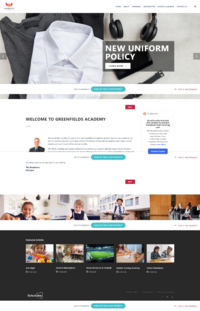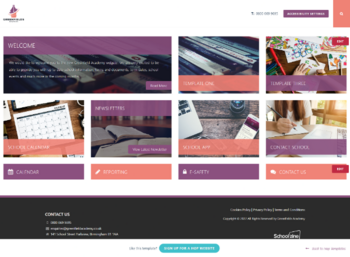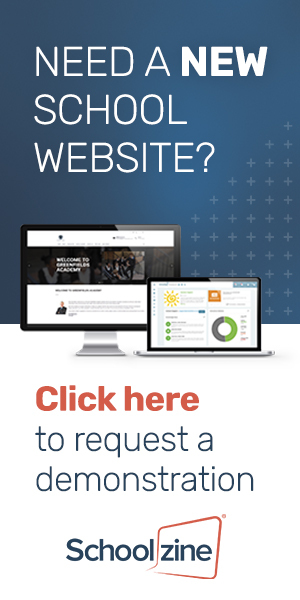THE IMPORTANCE OF INCLUDING VISUAL MEDIA IN YOUR SCHOOL COMMUNICATIONS
The way schools are communicating with parents is changing, and is unrecognisable compared to the methods they used just ten years ago. It also shows no signs of slowing down, so if leadership teams want to ensure their important messages are getting through, they need to make sure they are targeting them correctly.
One key method of communication schools now have at their disposal is visual media, which is a game-changer when it comes to grabbing, and holding, parents’ attention.
Here are some points to bear in mind, and some ideas on how to maintain a great level of engagement with your parent community.
Social media has set new expectations.
It’s probably no surprise that the increase in use of visual media has coincided with the rise in social media. Just as social media has evolved from text-based platforms like Twitter and Facebook to the more visual likes of Instagram and TikTok, so have school communications. School newsletters, for example, used to be a paper-based newsletter with a couple of pages of text. Nowadays, it’s much more likely to be an emailed PDF, sometimes containing one or two images.
If schools are smart, though, they will realise that they need to be more sophisticated than this. Because, whilst a school newsletter isn’t a social media platform in itself, it is still competing with these same channels for the parents’ attention. In other words, parents now expect visually appealing communications presented in an easy-to-consume way.
In order to get above the noise effectively, schools therefore need to use a similar approach in their newsletters - providing parents with a mobile-responsive, media-rich solution. And to do this, they need a platform that makes it easy to facilitate this.
Schoolzine’s mobile-friendly newsletters do just that. The parent engagement platform allows schools to build digital newsletters, full of pictures and videos that parents actually want to see, in minutes.
Parents’ attention spans are decreasing.
In line with the increase in usage of social media, the attention spans of everyone is decreasing all the time. For this reason, it’s really important to grab a parent’s attention with short, regular messages rather than long-winded paragraphs. A good example would be pushing out an app notification containing a couple of images of the Year 10 football match, over a wordy match report lost somewhere in the monthly newsletter (that may be distributed weeks after the match took place).
Visual media is a universal language.
Using a range of photos and videos is a simple way to cross language barriers with ease. With just a single image, you’re able to convey a message that would be a struggle with words alone. This is particularly important for schools who have a large EAL community, giving these schools the ability to increase the readership of their school communications.
Visual media shows parents what is really going on behind the school doors, in a way that text alone just can’t achieve. A gallery of photos showcasing the reception class’s artwork or a video of a celebration assembly isn’t something that can be easily translated into words.
Photos and videos easily help you to celebrate success.
Visual media normally focuses on the positive, and parents know this. Think about it, when was the last time you watched a friend’s video on Facebook that didn’t make you smile or even laugh? When parents see a school communication that is full of photos or videos, they will most probably assume that this is going to be enjoyable news.
If you’re regularly pushing out visual content, your school community will come to expect and look forward to the communications you send. This will of course increase their readership, and ultimately have a positive effect on parent engagement. Try to make a habit of regularly recording all the positive events that occur in the school, and encouraging your staff to do the same. With Schoolzine’s platform, the ‘submit content’ tool allows teachers, students and even parents to send photos for use in school communications. Both parents and pupils love seeing the snowmen built on a snow day, or an action shot of a victorious netball match.
Visual media is an effective marketing tool.
After being mobile responsive, including photos and videos is the next most important thing you can do to your school website to make it more effective as a marketing tool. Firstly, it shows your audience that your school is technologically savvy and ‘moving with the times’. Just as importantly, photos and videos are naturally more appealing and easier to consume than large chunks of text.
Your website is often the first impression you give to a prospective parent, so it needs to hit the mark instantly. This means a homepage that has at least four images, and if it can contain a video or moving image, even better. Schoolzine’s mobile responsive websites have a range of templates that all support visual media. Importantly, they are super-easy to change, meaning your website stays looking up to date.
The first step to pushing out content of a visual nature is to ensure that regularly recording events is part of your school’s ethos. Of course, it’s crucial that standards are upheld and safeguarding rules abided by in every case (for instance, respecting a parent’s wish for their child to be excluded from photos).
The next step is to choose a communications platform that supports the use of visual media across all channels (like the website, newsletter and app notifications) and one that makes it simple and quick to do so.
If you’d like to speak to someone who can help your school achieve all this and more, contact us to arrange a free, no pressure demo.





